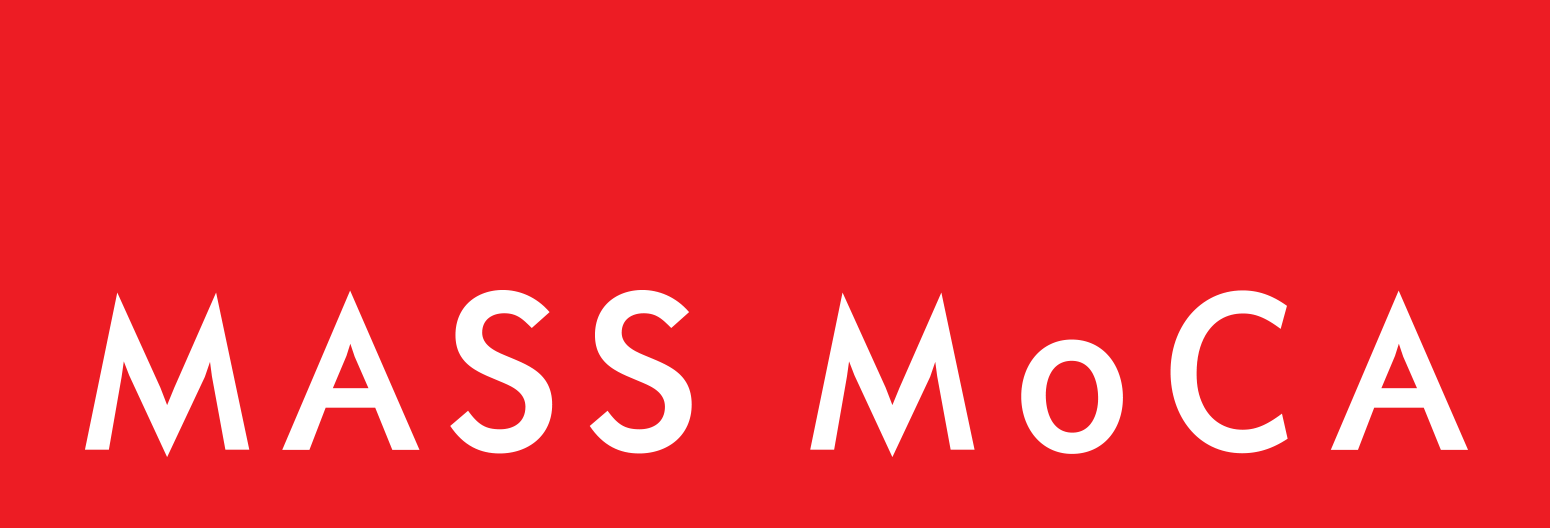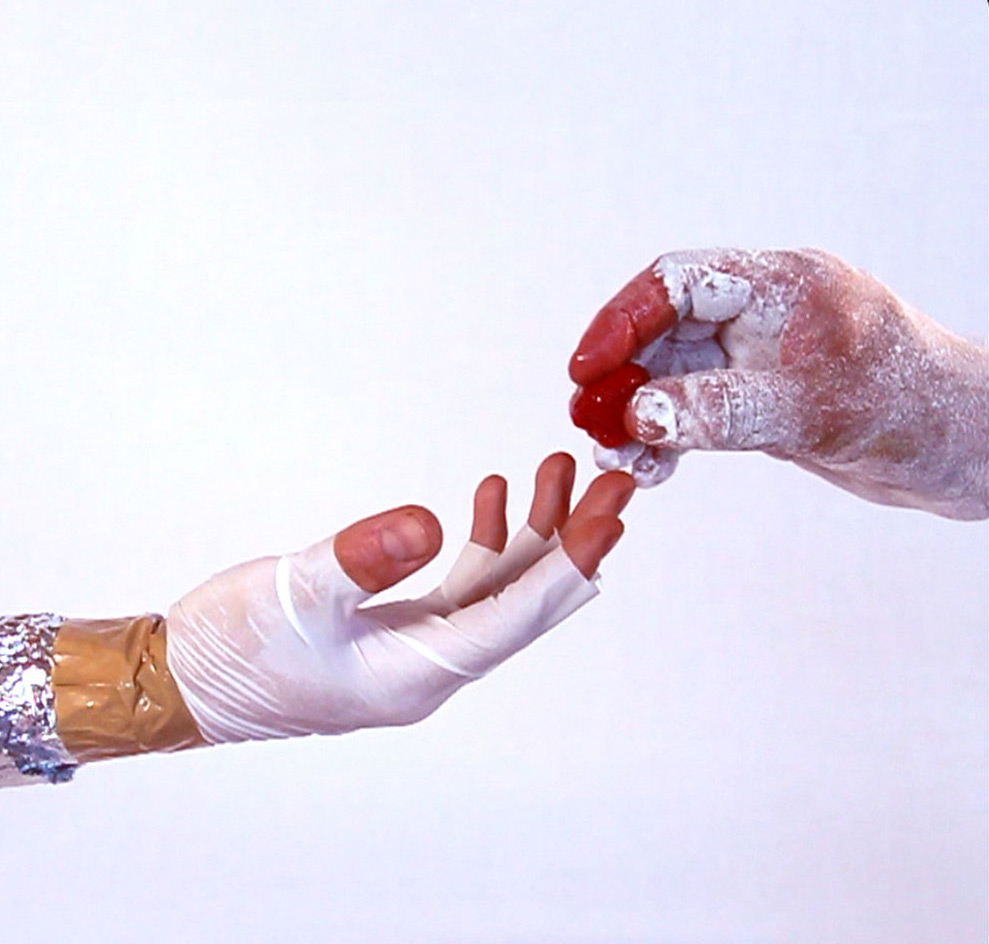
Archive Exhibitions, Exhibition
- April 16, 2016 - January 15, 2017
- Galleries
The New York Times dives into the immersive world of Alex Da Corte, in which the artist’s “riotous post-post-Pop sensibility” transforms MASS MoCA’s galleries into a “ravishing and terrifying” environment of sculpture and video installations.
Sebastian Smee writes, “Da Corte’s feeling for form and color, and his ability to squeeze a nonchalant poetry out of the most banal-seeming objects, is spellbinding.” Read the Pulitzer Prize-winning critic’s full review of Alex Da Corte: Free Roses in The Boston Globe.
Artnews lists Free Roses as a top ten show of 2016. “A star is born. Using grids of fluorescent lights, found objects, and even scent, the Philadelphia–based artist turned the long galleries of MASS MoCA—not easy spaces to handle—into environments filled with ghosts of consumer desires, memories, and stories, long passed and uncannily familiar.”
Big Red and Shiny writes, “It’s Da Corte’s videos that really showcase his peculiar brand of magic… The triumph of Free Roses lies not in the artist’s ability to wow his audience, but in his willingness to call us out on our own false consciousness.”
Provocative, puzzling, and visually seductive, in his first museum survey Alex Da Corte’s neon-bright, exuberant works merge the languages of abstraction and modern design with banal, off-brand items, ranging from shampoo to soda to tchotchkes and household cleaning supplies. Acid-hued and organized with a rigorous formal logic, Da Corte’s mash-ups mine products of domestic life—which he finds on pilgrimages to supermarkets, flea markets, and dollar stores—for unexpected visual appeal as well as emotional and libidinous impact. Heir to Pop artists of the 1960s, Da Corte combines common consumer objects with popular culture, personal family narratives—and other artists’ work—in vibrant installations of sculptures, paintings, and videos. Taking over MASS MoCA’s second-floor galleries, Free Roses featured a selection of works made over the last ten years, as well as a major new installation, which served as a conceptual fulcrum for the entire show.
The centerpiece of the exhibition was a sprawling new ensemble created for the museum’s 100-foot long, 30-foot tall gallery. It was the artist’s sixth installment in a series of works based on Arthur Rimbaud’s poem A Season in Hell. The young 19th-century poet’s angst-ridden prose—about self-knowledge, work, and love—is mirrored in Da Corte’s references to his suburban upbringing, teenage desire, family relationships, love, and loss. Also on view are three videos inspired by A Season in Hell, along with a suite of table sculptures—a series originally developed from props used in the videos. Meticulous arrangements of items such as picture frames, plastic grapes, a Wiffle bat, and hair rollers placed atop a surface supported by sawhorses [Untitled (Buffet)], 2012, read like sophisticated time capsules. Like his predecessors Mike Kelley, Paul McCarthy, and Jim Shaw, Da Corte investigates the cultural and psychological narratives invested in the objects he manipulates.
Da Corte is particularly attracted to objects, which, in his words, “he doesn’t understand or doesn’t like.” He tries to strip his work of his own distaste to study how others find pleasure in the form, color, or composition of even the most mundane elements. Sensitive to the hopes and aspirations embodied in these items, he elevates them as entities worthy of our attention. All images are sexy in Da Corte’s work; he understands that “fantasy is present and available in all forms.”
The exhibition featured two of Da Corte’s most important video works. The first is the seminal Chelsea Hotel No. 2 (2010), named for Leonard Cohen’s song of the same title, which provides the soundtrack. The work can be understood as an index of Da Corte’s vocabulary of materials, colors, and processes. Two hands—variously covered in flour, dirt, aluminum foil, and packing tape—manipulate foodstuffs and objects, including bread slices, bananas, grapes, cherries, bologna, and lettuce, as well as a plastic grocery bag, broom, and IKEA chair. The video bursts with color featuring a bright orange bucket, a robin’s egg blue plastic bowl, and cherry-red soda. Ketchup, soda, and nail polish mimic both paint and bodily secretions. As a study and a performance of color, texture, movement, sound, smell, and desire, the video brings to mind a number of precedents including the performances of the Viennese Actionists, as well as Fischli/Weiss’ 1987 film celebrating the magic of making sculpture, The Way Things Go, and Richard Serra’s Verb List from 1967–68 (Da Corte’s version might read “stacking bread,” “shaking soda,” and “squeezing ketchup”).
Da Corte’s groundbreaking video installation Easternsports (2014)—made in collaboration with artist Jayson Musson for the ICA Philadelphia—is a dazzling, eccentric four-channel video, installed “in-the-round” on four large, free-standing walls surrounded by colorful carpet tile and linoleum designed by the artist. The work envelops viewers in the vibrant, surreal, visually ordered, but psychologically messy world familiar to Da Corte’s work. The 3-hour kaleidoscopic video-cum-telenovela, with a poetic script by Musson and music by Dev Hynes, is inspired by the Thornton Wilder play Our Town. That minimal classic is re-imagined with brightly colored and patterned sets, shiny props, enigmatic characters, and references to the likes of Don Quixote, David Lynch, Sol LeWitt, Edna Andrade, and Ja Rule. In Easternsports, the products and objects of Da Corte’s sculptural and installation work become the props through which the video’s archetypal protagonists—often dressed in pared-down costumes of body-hugging tights—“perform,” in the artist’s words, “their desired lifestyles.”
Da Corte has long been interested in sets and stages—be it a television set, music video, opera, or cartoon, or more invisible kinds of stages and special effects, such as the cardboard shelf holding a stack of AXE body wash in the corner store. He explores the notion that artifice is everywhere, while examining the masks and props we use to create meaning in our lives, and also to deceive ourselves.
Alex Da Corte was born in Camden, New Jersey, in 1980. He received a Bachelor of Fine Arts in Printmaking/Fine Arts from the University of the Arts, Philadelphia, and a Master of Fine Arts from the Yale University School of Art, New Haven. Recent solo exhibitions include Giò Marconi, Milan (2015); a site-specific commission for Luxembourg & Dayan Gallery, New York (2015); the Institute of Contemporary Art, Philadelphia (2014, together with Jayson Musson); Carl Kostyál, Stockholm (2014); White Cube, London (2014); David Risley Gallery, Copenhagen (2014); Joe Sheftel Gallery, New York (2012 and 2013); the Institute of Contemporary Art, Maine College of Art, Portland (2013); Oko, New York (2013, together with Borna Sammak); and the Institute of Contemporary Art, Philadelphia (2012). Da Corte’s work has been included in numerous group exhibitions in venues that include the Museum of Modern Art, New York; MoMA PS1, New York; the Studio Museum in Harlem, New York; deCordova Sculpture Park and Museum, Lincoln, MA; Hammer Museum, Los Angeles; Musée des beaux-arts Montréal; Contemporary Art Museum, St. Louis; Zach Feuer Gallery, New York; Mitchell-Innes & Nash, New York; Team Gallery, New York; and Yvon Lambert, New York. In 2012, Da Corte was awarded a Pew Fellowship in the Arts from the Pew Center for Arts & Heritage. He lives and works in Philadelphia.
Opening Reception
Saturday, April 16, 5–6:30pm
Free to members | $7 not-yet-members
RSVP to rwehry@massmoca.org or 413.664.4481 x8157
Join us up in the club after the reception for a sensational night with nine-piece, Ethio-funk Debo Band at 8pm.
This exhibition is supported by the Horace W. Goldsmith Foundation, the Massachusetts Cultural Council, the Barr Foundation, Luxembourg & Dayan Gallery, and artnet. Exhibitions of emerging artists are made possible in part by the Anna-Maria and Stephen Kellen Foundation.
Chelsea Hotel no. 2, 2010 (still)
HD digital video
3:04 minutes
Courtesy of the artist
Easternsports was organized by the Institute of Contemporary Art, University of Pennsylvania. ICA is grateful to the Edna W. Andrade Fund of the Philadelphia Foundation for its generous support. Additional funding has been provided by the Daniel S. and Brett Sundheim Endowed Fund. The tour of Easternsports is supported by Jeffrey R. and Linda Chodorow.



